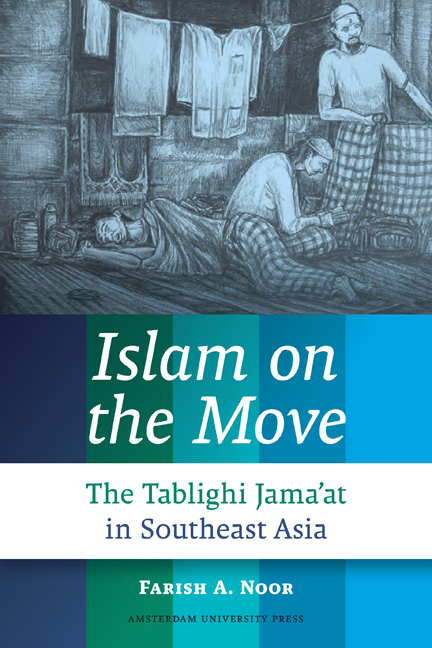Book contents
- Frontmatter
- Dedication
- Contents
- A Note on Proper Names and the Spelling Used in This Book
- Glossary
- Introduction: Brother Bismillah and My Introduction to the Tablighi Jama’at
- I At Home Across the Sea: The Arrival of the Tablighi Jama’at and Its Spread Across Southeast Asia
- II Learning to Be: The Foundational Literature of the Tablighi Jama’at and Its Role in Defining the Movement
- III Learning on the March: The Portable, Reader-friendly Literature of the Tablighi Jama’at and Its Role in the Self-identification and Reproduction of the Movement
- IV The Stories We Tell: The Conversion Narratives of the Tablighi Jama’at and the Internalisation of Tablighi Identity
- V Learning to Be Tablighi: The Rule-governed World of the Tablighi and the Disciplining of the Self
- VI How We Look and What We Are: The Tablighi Jama’at Framed in the Eyes of Others
- VII Finally, a Summing Up: The Tablighi Jama’at as the Complex Thing That It Is
- Notes
- Bibliography
- Index
IV - The Stories We Tell: The Conversion Narratives of the Tablighi Jama’at and the Internalisation of Tablighi Identity
Published online by Cambridge University Press: 14 January 2021
- Frontmatter
- Dedication
- Contents
- A Note on Proper Names and the Spelling Used in This Book
- Glossary
- Introduction: Brother Bismillah and My Introduction to the Tablighi Jama’at
- I At Home Across the Sea: The Arrival of the Tablighi Jama’at and Its Spread Across Southeast Asia
- II Learning to Be: The Foundational Literature of the Tablighi Jama’at and Its Role in Defining the Movement
- III Learning on the March: The Portable, Reader-friendly Literature of the Tablighi Jama’at and Its Role in the Self-identification and Reproduction of the Movement
- IV The Stories We Tell: The Conversion Narratives of the Tablighi Jama’at and the Internalisation of Tablighi Identity
- V Learning to Be Tablighi: The Rule-governed World of the Tablighi and the Disciplining of the Self
- VI How We Look and What We Are: The Tablighi Jama’at Framed in the Eyes of Others
- VII Finally, a Summing Up: The Tablighi Jama’at as the Complex Thing That It Is
- Notes
- Bibliography
- Index
Summary
But who, except God, can say that a man is wise or foolish if he follows the call of his conscience?
Muhammad AsadIn the previous chapters we looked at the foundational texts of the Tablighi Jama’at as well as the locally produced vernacular literature of the movement. Now we shall turn to the personal microbiographies of the Tablighis themselves, focusing in particular on the stories they tell of themselves and to themselves – which may help us in our attempt to understand what may be termed the Tablighi mindset. Labouring still along the path set by Quine and his notion of radical translation of the language of the Other, I will extend the scope of my enquiry beyond the written to the spoken word.
The Tablighis are, obviously, Muslims – but they also happen to be Tablighi Muslims, which means that they belong to a particular community set against the broader context of the wider Muslim community as a whole. Though it would be hard to dispute the Tablighis’ claim that they belong firmly within the fold of orthodox Islam and that they are not a cult or sect by any stretch of the imagination, we still need to account for how and why ordinary Muslims choose to abandon their former lives in order to gain membership to this rather select fraternity. My focus in this chapter will be the conversion narratives of the Tablighis, by means of which I hope to understand the internal workings of the Tablighi Jama’at as well.
In the course of my field research, I have come across a wide variety of conversion narratives among members of the Tablighi who reside throughout Southeast Asia. Earlier I argued that the discursive economy of the Tablighi should be seen as a system with its own set of rules of meaning. The discourse of the Tablighi is in some respects self-referential and distinguishes itself from others by way of the discursive strategies – of identity construction, boundary marking, exteriorisation of difference and denial of alterity – that can be found in other minority discourses as well.
- Type
- Chapter
- Information
- Islam on the MoveThe Tablighi Jama'at in Southeast Asia, pp. 115 - 144Publisher: Amsterdam University PressPrint publication year: 2013



